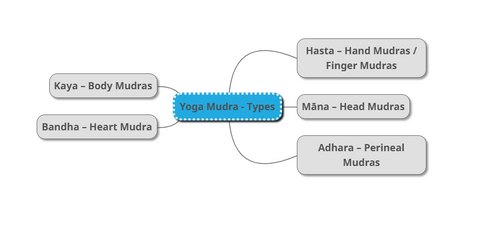Your Cart is Empty
EXPLORE THE WORLD'S PREMIUM EARTH FRIENDLY YOGA PRODUCTS MADE IN INDIA
Menu

EXPLORE THE WORLD'S PREMIUM EARTH FRIENDLY YOGA PRODUCTS MADE IN INDIA
Shop

Our Favorite Yoga Mudras for Meditation
February 26, 2021 2 min read

Yoga Mudra Vigyan is a lesser known branch of Yoga which deals with the science of Yoga gestures or mudras as they are called. Mudra can be associated with the entire body or a single part. For example, when Mudras are done with hand, they are called Hast Mudras. Mudras have been recognized as a healing expression under the ancient science of Ayurveda. When combined with breathing exercises, they are known to energize the body by increasing the flow of prana, the life force through out. Early on, we were taught to recognize the Mudras as a force and not a religious gesture or a symbol.
Mudra Benefits

Mudra - Branches & Types

Here we have compiled a list of few selected Mudras, which were taught to us during and the mudras that have really helped us with our meditation practice:
1. Chin Mudra

Benefits of Chin Mudra
|

How to hold Chinmaya Mudra?
Benefits of Chinmaya Mudra
|
3. Adi Mudra

How to hold Adi Mudra?
- In Adi Mudra, the thumb is placed at the base of the small finger, and the remaining fingers curl over the thumb, forming a light fist.
- The palms are again placed facing upwards on the thighs and the breathing repeated
Benefits of Adi Mudra
- Relaxes the nervous system.
- Helps reduce snoring.
- Improves the flow of oxygen to the head.
- Increases capacity of the lungs.
4. Dhyana Mudra

How to hold Dhyan Mudra?
This is also called as meditation Mudra and can be best performed in a sitting posture.
1. Place the outside of your right hand into the palm of your left hand. Then put both hands in your lap.
2. Make sure that the tips of your thumbs touch, but that your hand remains relaxed.
Benefits of Dhyan Mudra
- Ensures mindfulness
- Reduces stress
- Improves concentration and memory
- Relieves anger and helps against depression
These are our top four hasta mudras for meditation. More information on Mudras and Mudra Vigyan can be found in:
1. Asana Pranayama Mudra Bandha by Swami Satyananda Saraswati
2. Mudra Vigyan: Philosophy and Practice of Yogic Gestures by Swami Niranjananda Saraswati
Recommendation: Combine your favorite Mudra with mantras to enjoy an even better meditation experience.
Leave a comment
Comments will be approved before showing up.
Subscribe
Sign up to get the latest on sales, new releases and more …